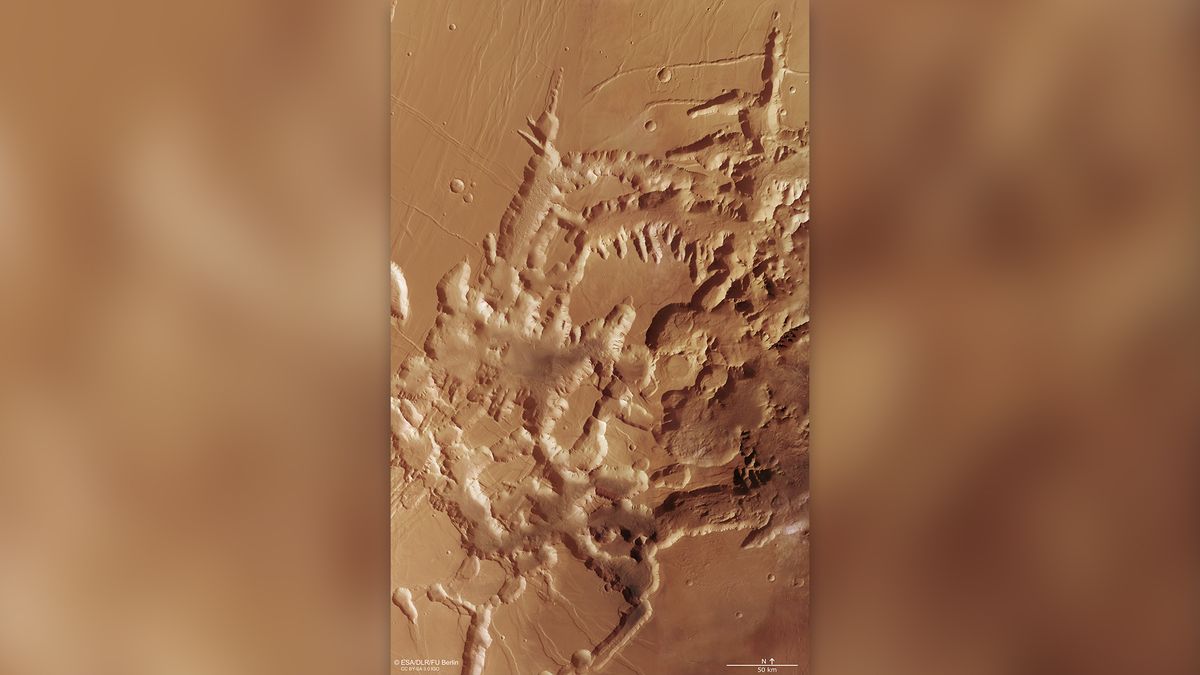What it is: A rift valley called Noctis Labyrinthus (“labyrinth of night”)
When it was released: Jan. 24, 2024
Where it is: Between Valles Marineris and Tharsis on Mars
Why it’s so special: Noctis Labyrinthus is unlike anywhere else in the solar system. Around 739 miles (1,190 kilometers) long, 19 miles (30 km) wide and 4 miles (6 km) deep, it’s a rift valley region of Mars studded with sand dunes, canyons and landslides.
A new labeled and zoomable image published this week by the European Space Agency (ESA) comes from data collected by ESA’s Mars Express spacecraft, which has been orbiting the Red Planet since December 2003. In October 2023, ESA released a flyover video of the same region that used images from Mars Express and topographic data to recreate the landscape in 3D.
In the new image, the original ground level can still be seen, though much of the ground has eroded. That’s because volcanism has caused the surface to stretch upward, thinning the planet’s crust and forming cracks.
Noctis Labyrinthus is between the western edge of Valles Marineris, an extensive canyon system known as the “Grand Canyon” of Mars, and Tharsis, the largest volcanic region on Mars, which contains 12 large volcanoes.
During its almost 20 years of science, Mars Express has provided spectacular images of the Red Planet and traced the history of water across its surface, providing evidence that Mars once had environmental conditions suitable for life.
How to see it in the night sky: Although it’s possible to see Mars just before sunrise, the planet looks its brightest close to opposition, when it’s closest to Earth. That occurs every 26 months and will next happen on Jan. 15, 2025.

Dr. Thomas Hughes is a UK-based scientist and science communicator who makes complex topics accessible to readers. His articles explore breakthroughs in various scientific disciplines, from space exploration to cutting-edge research.








